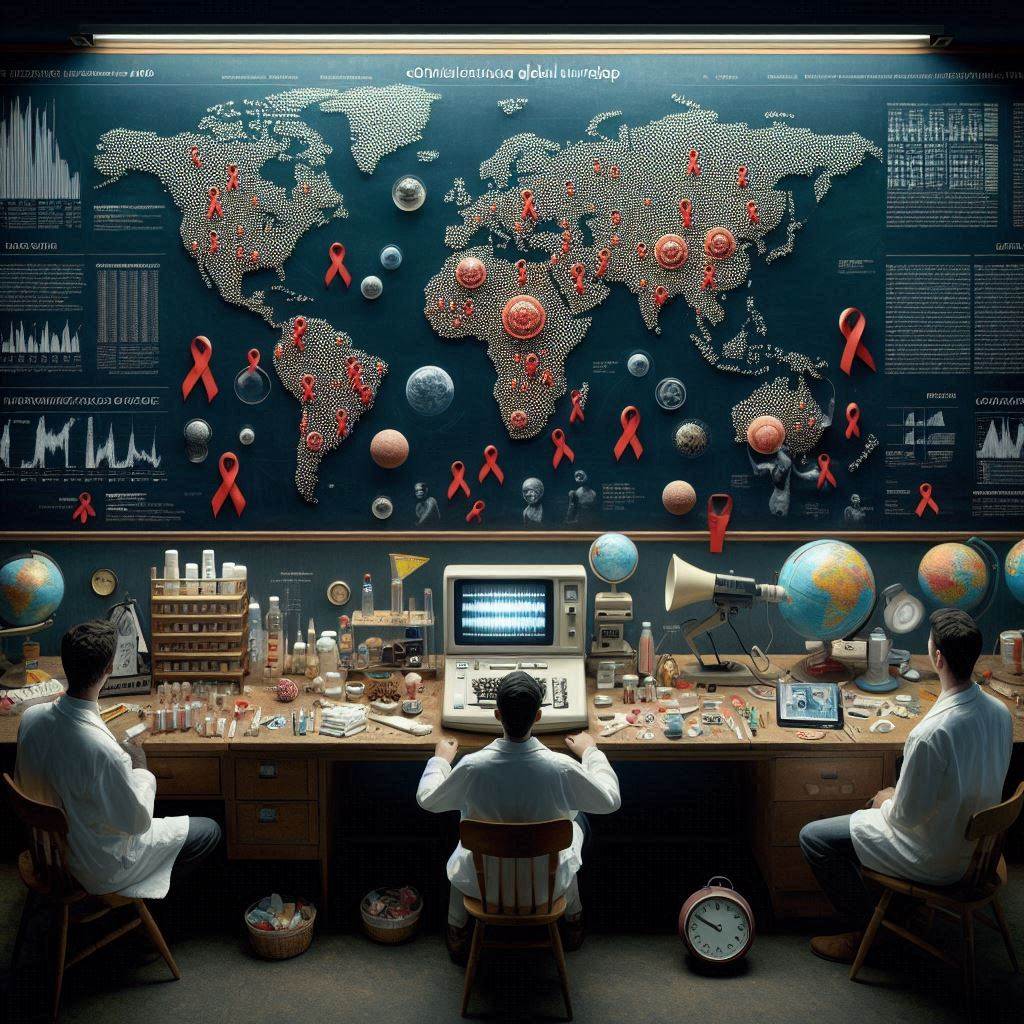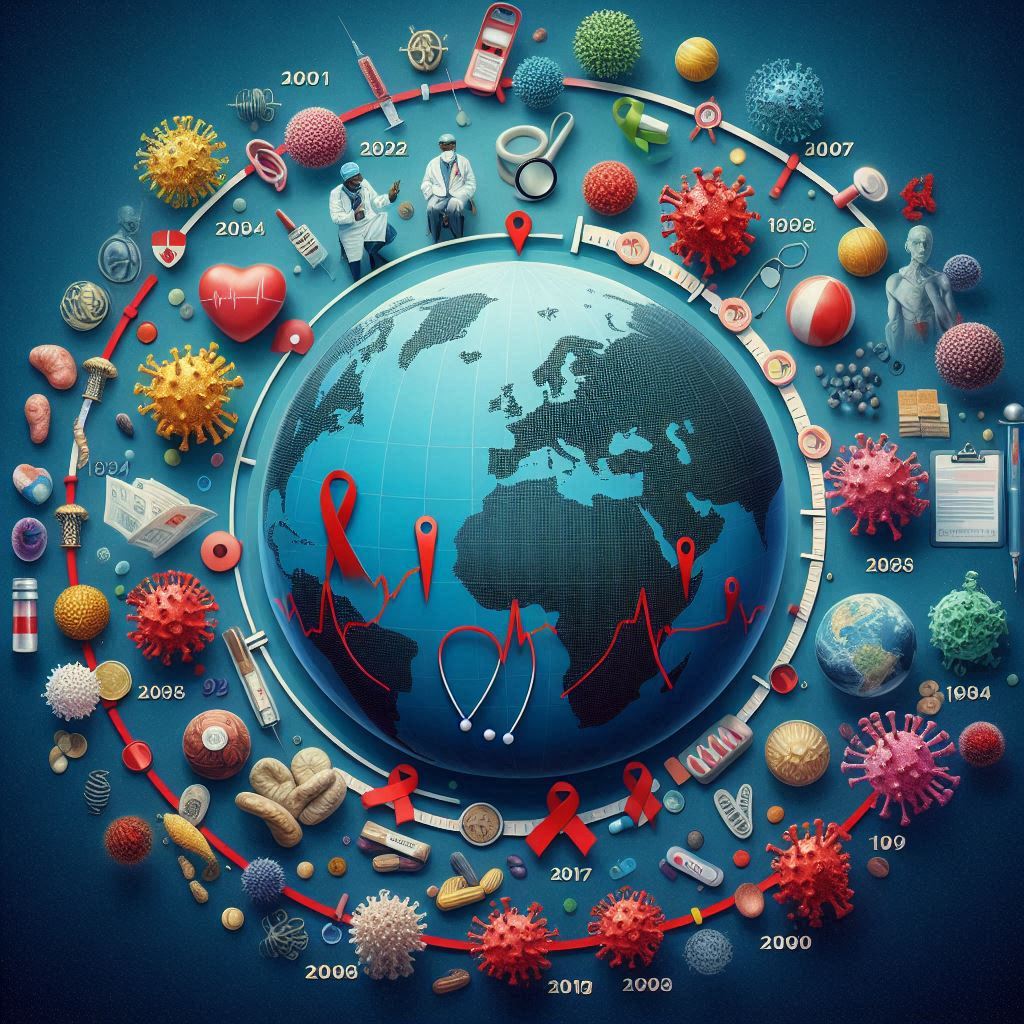Imagine the world as a vast stage where a silent storm began brewing in the shadows. What started as whispers of a mysterious illness in isolated communities soon exploded into a global health crisis that shook humanity for decades. This is the AIDS pandemic timeline — a decade-by-decade chronicle that answers the haunting question: where did AIDS come from, and how did it conquer the map so rapidly?

Pre-1980s – The Hidden Beginnings
Scientists now believe HIV crossed over from chimpanzees to humans in Central Africa through zoonosis—a virus known as SIV (Simian Immunodeficiency Virus) mutated into what we now know as HIV.
This spillover likely occurred in the early 20th century, possibly as early as the 1920s in what is now the Democratic Republic of Congo, during bushmeat hunting or blood exposure. The virus spread slowly in isolated African regions, hidden by weak surveillance and lack of understanding.
The virus was already on the move—before the world knew it existed.
1980s – Discovery, Denial, and Panic
In 1981, doctors in Los Angeles reported rare infections among young gay men. The illness had no name, no cure, and no pattern—only devastation.
But stigma ran rampant. The public questioned: Where did AIDS come from? Many wrongly blamed specific communities—particularly the LGBTQ+ population and African immigrants—fueling discrimination.
By the late 1980s, AIDS had reached pandemic status. Over 100,000 cases were reported globally.
1990s – A Global Awakening
The world couldn’t ignore AIDS any longer. Governments, media, and health organizations finally mobilized.
- Global death tolls skyrocketed: Over 3 million new infections per year.
- Sub-Saharan Africa bore the worst brunt, accounting for two-thirds of all global HIV cases.
- Campaigns for safe sex, testing, and early treatment began, yet many nations still struggled with stigma.
It became clear that the virus didn’t discriminate. Where did AIDS come from evolved into a deeper question: Why did the world wait so long to act?
2000s – Treatment and Hope Rise
By the early 2000s, the fight turned scientific. With proper treatment, HIV was no longer a death sentence.
- Global funding increased, led by programs like PEPFAR and the Global Fund.
- New infections began to decline slowly in wealthier countries.
- Education campaigns expanded, and access to affordable medication in developing nations began improving.
Yet the stigma lingered. In many places, the question “where did AIDS come from?” remained tangled with myths and fear.
2010s – Tech, Awareness, and Testing
A new decade brought new tools. Mobile technology and the internet empowered global awareness.
- Self-testing kits and PrEP (pre-exposure prophylaxis) gave people better control over prevention.
- Influencers, musicians, and world leaders began speaking openly about HIV/AIDS.
- Countries like South Africa began leading the charge in treatment access.
But disparities remained, especially among marginalized groups and in areas of conflict or poverty.
2020s – Beyond the Virus
With COVID-19 shaking global health systems, attention was briefly diverted. But the AIDS pandemic pressed on:
- New infections have decreased by 30% since 2010—but hotspots persist.
- The U=U campaign (Undetectable = Untransmittable) revolutionized understanding, emphasizing that people with treated HIV can’t pass it on sexually.
The scientific community continues to pursue a vaccine and functional cure. Yet the question of origins remains a vital part of education:
Knowing where AIDS came from helps us prevent the next zoonotic spillover.
The AIDS pandemic isn’t just a health crisis—it’s a mirror showing us our societal strengths and failures. From ignorance and fear to resilience and innovation, the timeline is a living lesson in global responsibility.

And at the root of it all remains that essential inquiry: Where did AIDS come from?
Understanding that origin—the cross-species leap, the early silence, the rapid spread—remains key to stopping future pandemics before they begin.
Because history doesn’t just repeat itself—it mutates.


